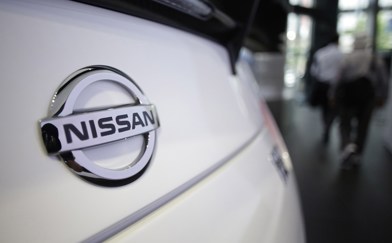It's undeniably the most famous car brand in, um, cycling. The 2023 Tour de France (July 7-23) marks the 20th time Skoda has supplied the Direction Generale race director's car. It's also been the official vehicle partner since the 2004 event, suppling more than 200 support cars.
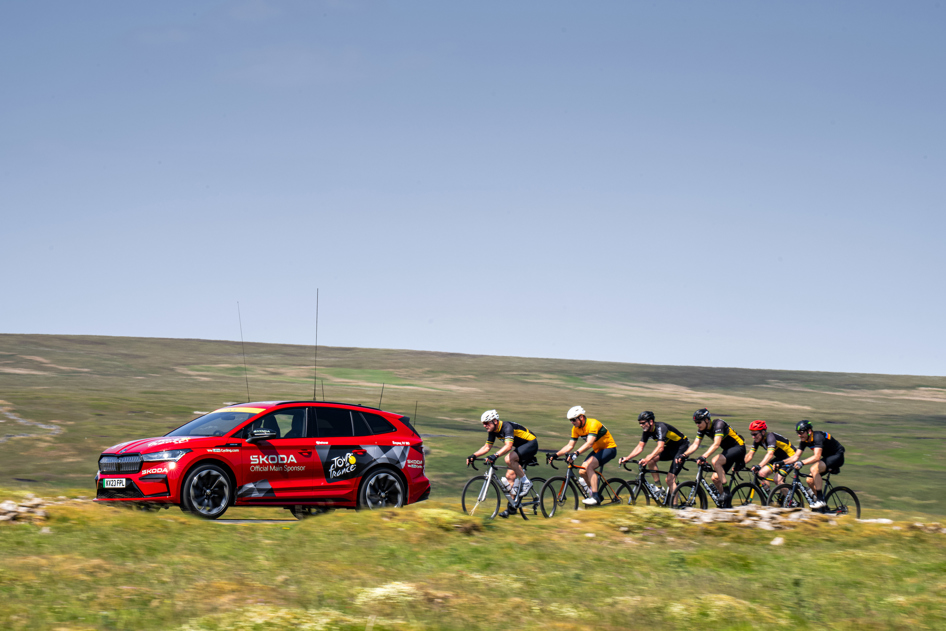
The race director's car is key to the Tour de France, travelling at the head of the field. Known simply as the "red car" in cycling circles, it's effectively the office of the race director and is a communications hub via which race officials and management teams can control and monitor the race.
In total, Škoda race direction cars have started 399 stages and covered 66,000km since Škoda started partnering with the Tour de France. By the end of this year’s event, the total will be 420 stages.
Superb Mk1 (2004–07)
Skoda replaced Alfa Romeo as the red car in 2004. The brand chose the Superb for director Jean-Marie Leblanc, due to its long wheelbase (it was essentially an extended Volkswagen Passat) and generous rear legroom.
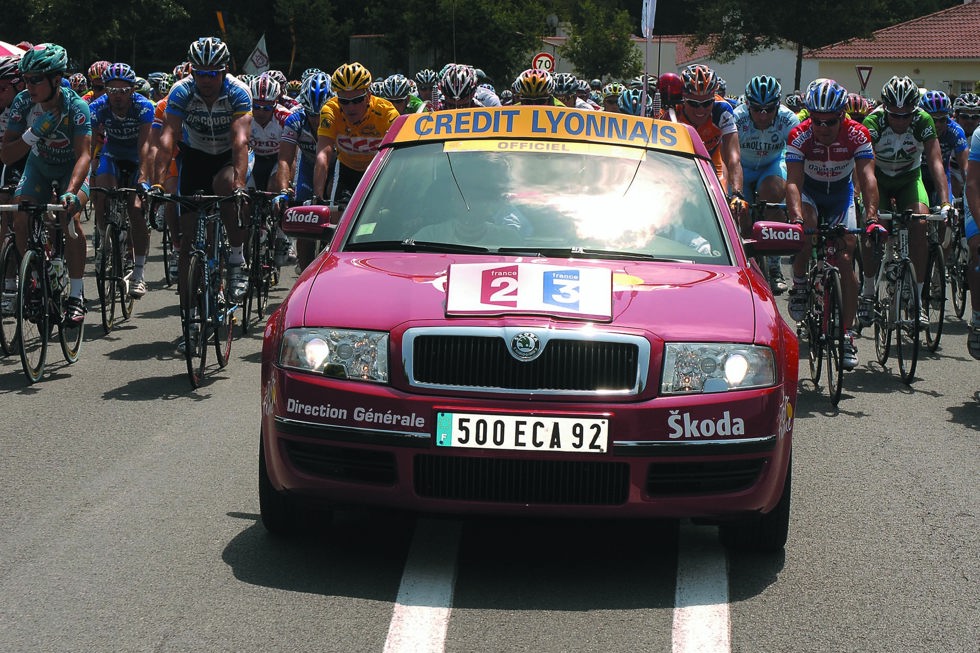
Like all race director vehicles, the first-generation Superb featured a number of special features. These included a rear sunroof through which the race director could stand, plus a set of roof rails, specially built to match the curve of the Superb roof.
The first-generation Superb also featured a number of more unusual features specified by the management team. These included a makeshift desk and a small, air-conditioned centre console designed to hold a bottle of champagne and two glasses.
Finished in Corrida Red and originally powered by a 1.9-litre turbo-diesel engine, the first-generation Superb continued until 2008, with a facelifted model replacing the original in 2006. In the same year Christian Prudhomme succeeded Jean-Marie Leblanc as the race director.
Superb Mk2 (2008-15)
Unveiled at the Geneva Motor Show in March 2008, the second-generation Superb lined up at the start of the 95th Tour de France in Brest three months later. One of its most notable features was the "twindoor" bootlid that could be opened as a tailgate or a sedan-style boot.
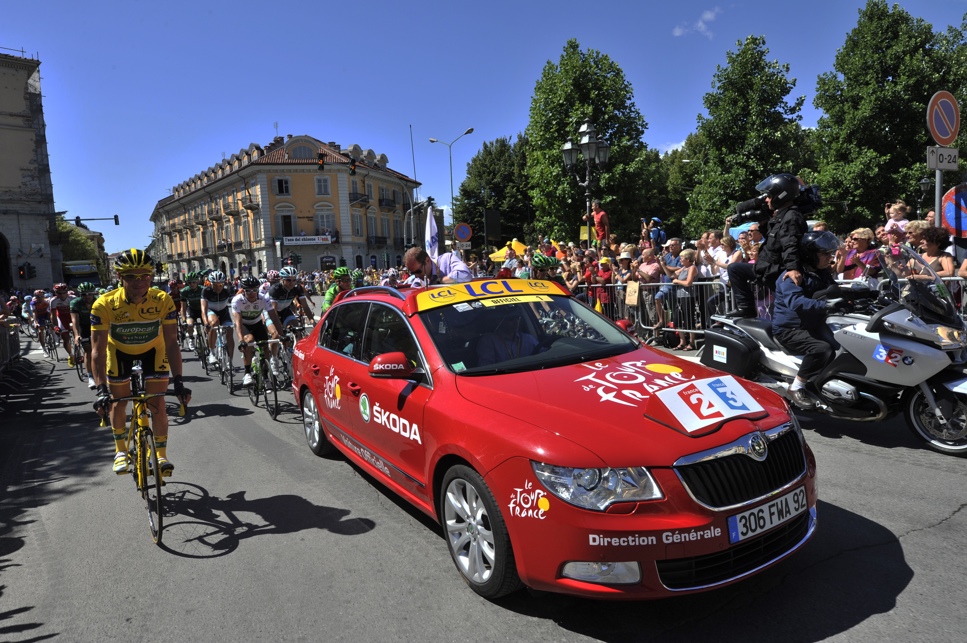
It also came with even more rear legroom than the original, which allowed the event organisers to install a larger centre console, upgraded GPS system and workspace. It retained the champagne chiller, roof rails and rear wind deflectors, along with a larger, rear-mounted glass sunroof.
As with the original Superb, the second-generation model doubled up as a hospitality venue. While Prudhomme always took his position behind the driver, the other rear passenger seat was often reserved for celebrities, VIPs and dignitaries.
Over the course of the last decade, the "spare" seat has played host to Tom Cruise, Ben Stiller, Connor McGregor, Prince Albert of Monaco and Nicolas Sarkozy.
Superb Mk3 (2016–2019)
Škoda introduced the third evolution of the Superb in 2016. As with previous model changes, race director Christian Prudhomme got a bigger workspace.
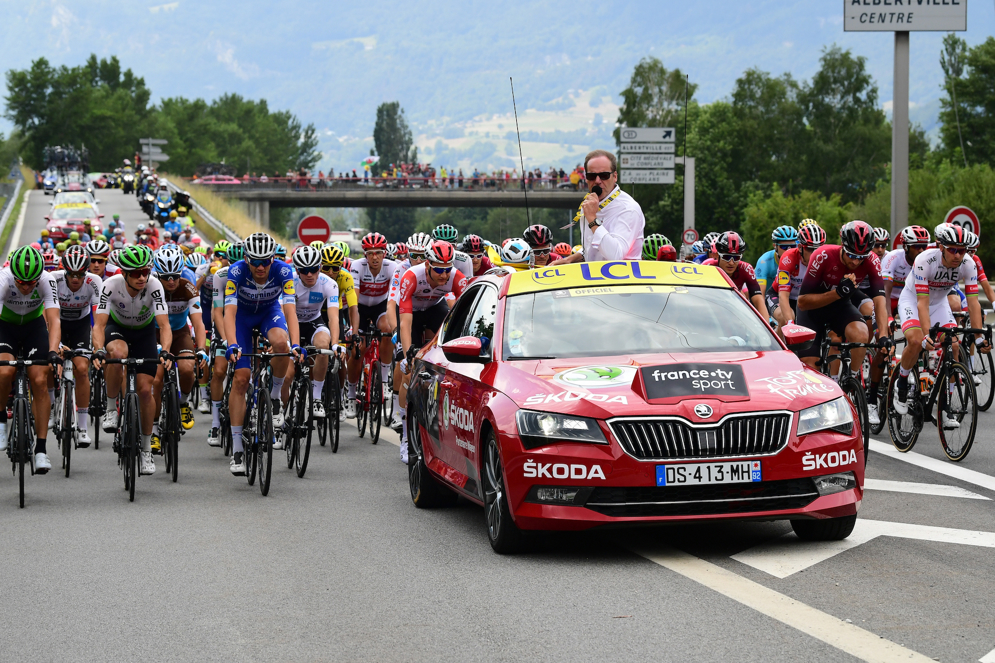
This was modified by the Tour de France organising team with an updated GPS and communications hub that gave Prudhomme access to more information than ever before.
For example, the radio system fitted to the third-generation car came with four channels: one "Radio Tour" that provided information on the entire peloton, an "Info" channel that relayed information regarding the route, and two private channels reserved for managers and commissioners.
Superb iV Mk3 (2020–present)
Škoda’s first plug-in hybrid electric vehicle (PHEV) took centre stage for the 2020 event and has been used on all subsequent races.
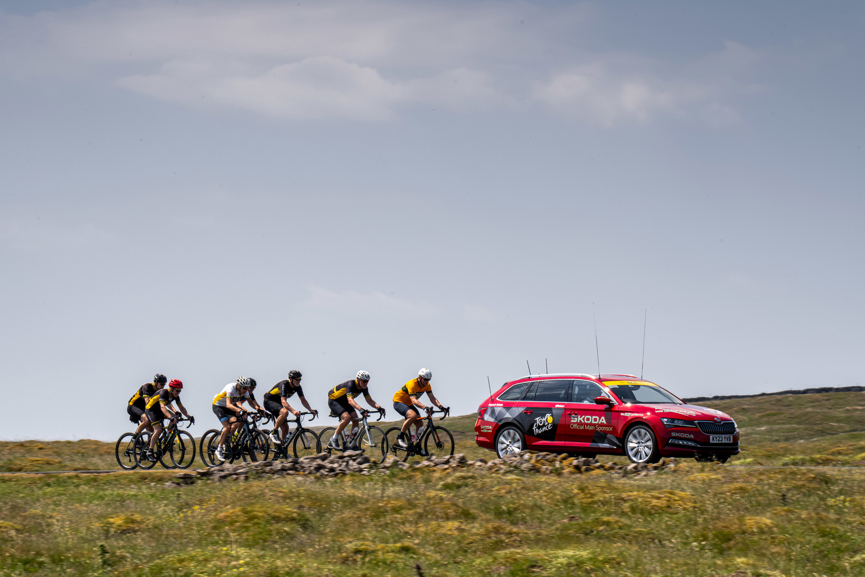
According to Gilles Maignan, the former cyclist who now drives the race director’s car, the switch to hybrid power has been appreciated by the riders: “The Superb iV’s hybrid system allows me to run in electric mode between the Fictive Start and the Real Start of each stage. I think this is appreciated by the riders who have to stay right behind the car on this section of the race.”
It was also the first non-diesel Škoda model to be used for the Direction Generale car.
Enyaq (2020–present)
Skoda's first purpose-built pure-electric car made its debut on the fifth stage of the 2020 Tour de France (Gap to Privas) and was used on two further stages later in the event.
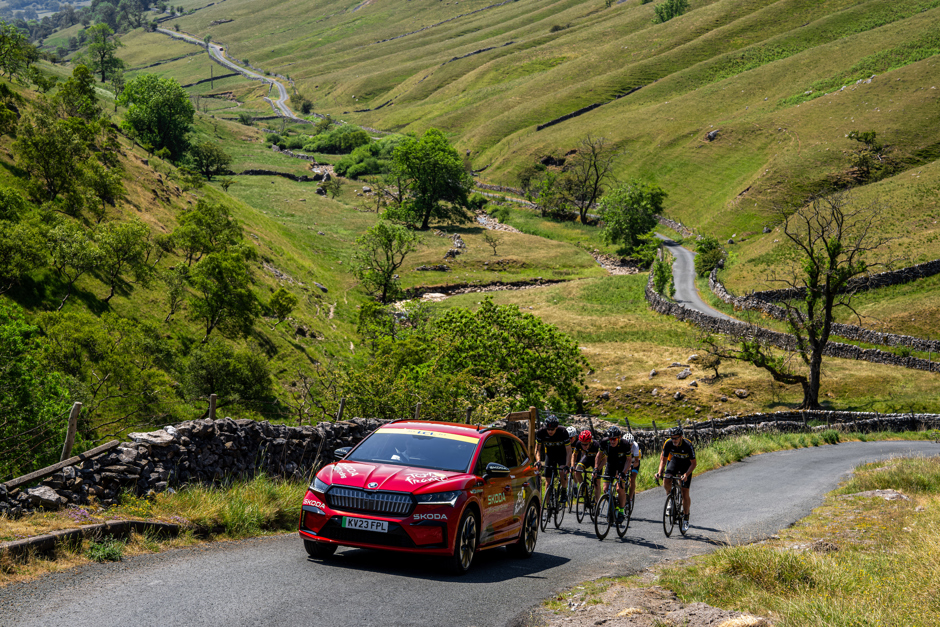
As always, a sunroof was installed above the rear seats while the standard roof bars were made higher to make them easier to hold when the car was in motion. The conversion team also had to design and source a new centre console and cooling cabinet for the traditional bottle of champagne.
To ensure that the vehicle’s additional equipment didn’t affect the Enyaq’s driving range, the team installed two 75 ampere batteries in the boot floor. The design was completed by new champagne flute holders... of course.
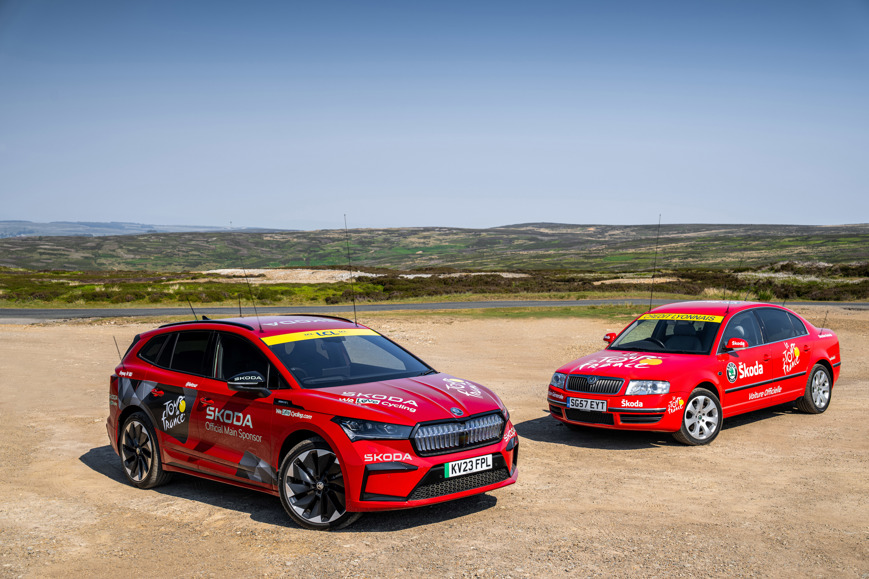
In addition to the body modifications, the Enyaq comes with a number of features that increase its environmental credentials.
Among these are special tyres developed by Continental (Major Partner of the Tour de France) specifically for the Enyaq. Used on all Enyaq support models on the event, the special tyres feature carcasses made entirely from recycled PET materials.
Enyaq was used as the main race direction vehicle for 2021 and has continued in that role, although the Superb iV is still used for some mountain stages. In 2022, the Enyaq was the command vehicle on 16 of the 21 stages.





















